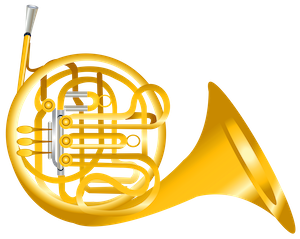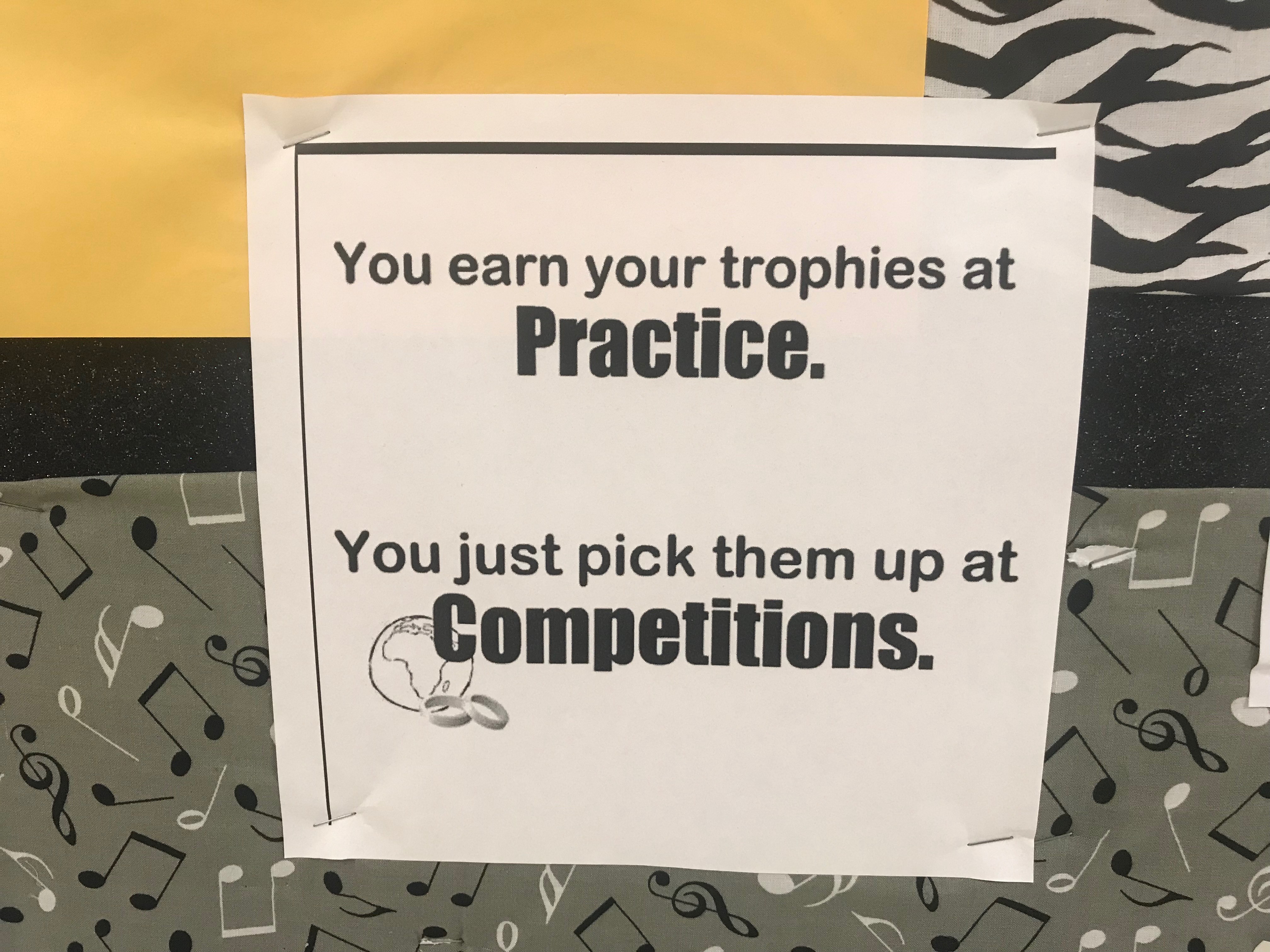Monday, February 4, 2019
 There are several criteria that should be met in order for a student to be selected to play the French horn, and all are important.
There are several criteria that should be met in order for a student to be selected to play the French horn, and all are important.
I like to select my horn players after at least a semester of beginning band. I look for students (usually trumpet players) who have made steady progress on their current instrument. I want students who do well in school, are hard workers, and who have confident personalities. I want kids who look forward to participating in all-region band auditions, band camp, private lessons, etc. These things are important steps to becoming an exceptional player on any instrument. However, it's even more important when you have only 4-6 players who will eventually be expected to perform 4 different parts at contest. You can't afford to have weak horn players!
Many people feel students should start on single F or single Bb horns. Proponents of the F horn say the tone is better, and those who support the single Bb would say it is easier to hit pitches. Both statements are true! Personally, I start beginners on double horns. I teach them from the onset to play on the F side of the horn for 2nd line G and lower, and on the Bb side for G# and above. This is how the double horn was designed to get the best quality of sound in all ranges.
Possibly the most important factor in the selection process is whether or not they have a good set of ears. No matter how much they want to play horn, it will not be a positive experience for them OR you if they can't hear pitches. Horn playing is very similar to singing in that you MUST hear the pitch before you can accurately play it. Physically, I look for hands that are large enough to do the job in the bell and on the keys. Lips that are uneven can also be a problem, because the aperture for horn needs to be oval-shaped: similar to the end of an oboe reed. If a student has a cupid's bow, it will deflect the air stream in the middle and make things difficult. The only solution in this situation is to place the mouthpiece slightly off-center, which can work in some cases but isn't ideal.
Once you have found the right kids for the job, then it's time to familiarize them with the instrument. The seated playing posture should include flat feet and a straight back. Most students will be most comfortable seated on the front half of the chair, where they can adjust the position of their right leg to appropriately accommodate the bell. The bell should rest on the outside of the right thigh. Be sure the bell is not facing into the body or down onto the leg. The left hand position is fairly simple. The fingers should be curved and placed on the keys with the pinkie in the ring and the thumb on the trigger. The right hand is another story. It is extremely important since it affects horn intonation and tone quality. The right hand should be lightly cupped, with the thumb touching the side of the index finger and no space between the two. The hand should be held vertically, with the little finger nearest the ground and the thumb at the top. The hand should then be inserted into the bell so that only the backs of the fingers and the top of the thumb touch the metal. How far the hand goes into the bell will be determined by the size of the hand. The tone should sound open and warm. Hand position will have to be constantly monitored in the beginning, and reminders will have to be issued frequently! If you don't keep an eye on them, they will revert to whatever position requires the least effort.
Mouthpiece placement and embouchure are also critical. The mouthpiece should be placed in the middle of the lips, two-thirds on the upper and one-third on the lower lip. Mouthpiece pressure should be equal on both lips. The most common fault occurs in allowing most of the pressure to be on the upper lip. I solve this by asking the player to keep their head up and/or to keep the bell closer to the body. The angle of the lead pipe should be downward from the lips.
For questions regarding pedagogy, the "The Art of French Horn Playing" by Philip Farkas is a good place to start while realizing it was published in 1956 and is slightly dated in some respects.
 | Jana Gorham has been a band director for 38 years, including the last 30 in Owasso, OK. She teaches beginning trumpets, seventh grade band, and assists with high school marching band. In addition, she teaches a full schedule of horn students. Jana is an OMEA Exemplary Teacher and a member of the Oklahoma Bandmasters Hall of Fame. |

| (417) 882-7000 | (573) 256-5555 | (816) 792-8301 |
| (417) 781-3100 | (405) 896-8111 | (479) 464-8877 |
| (918) 286-1555 | (636) 229-1904 | (417) 882-7000 |
